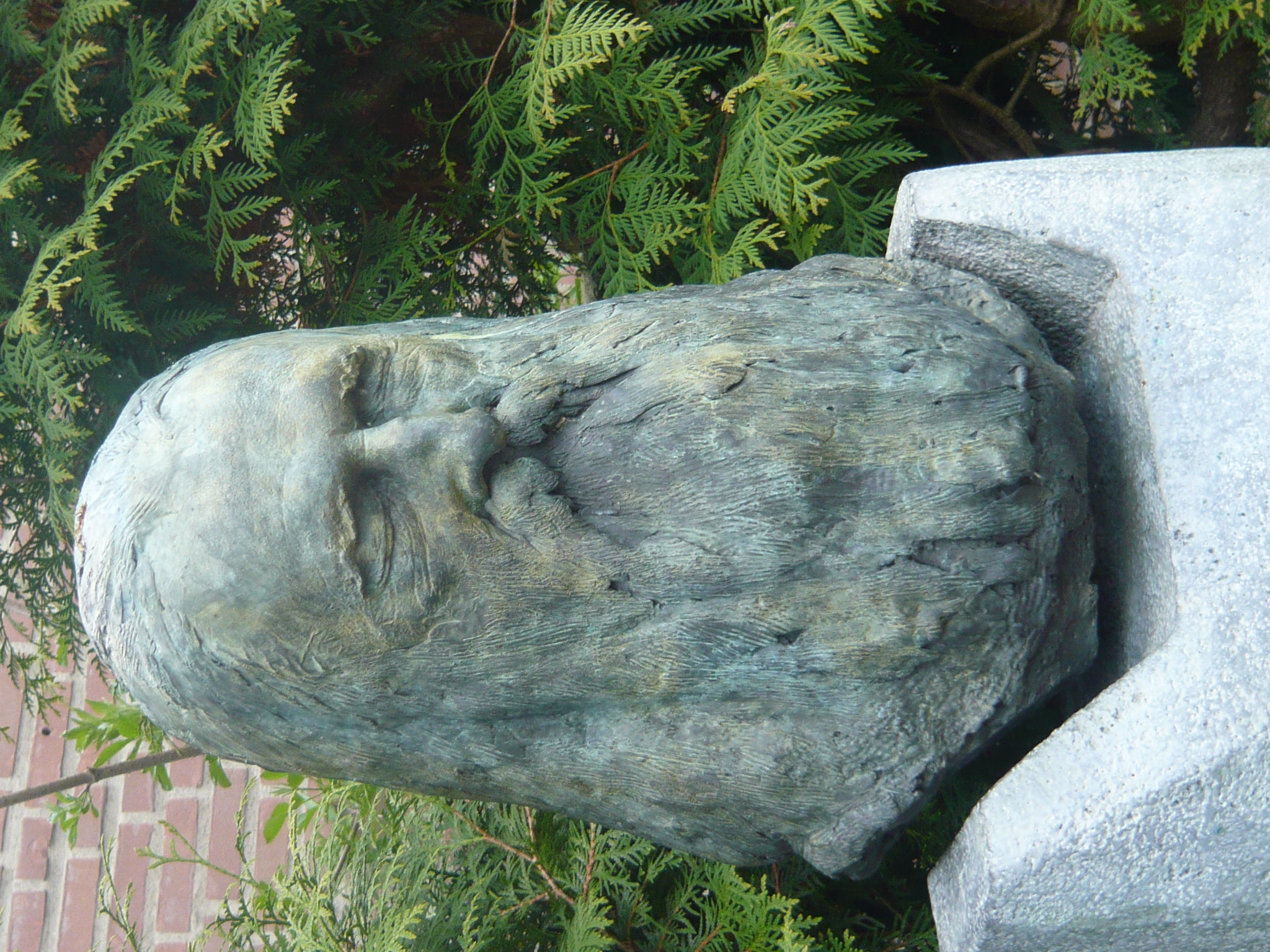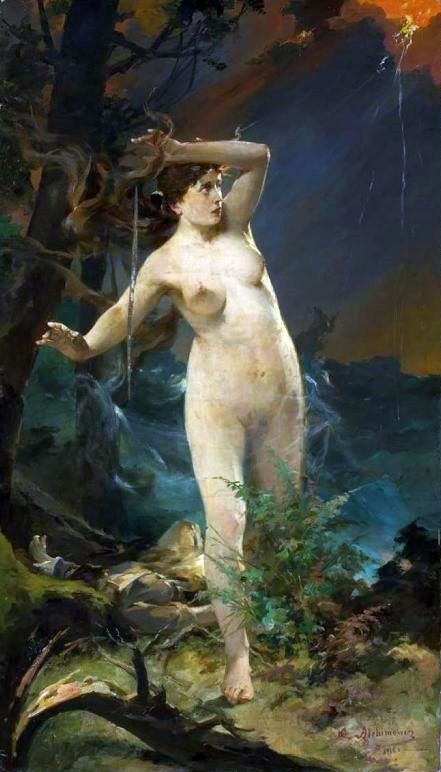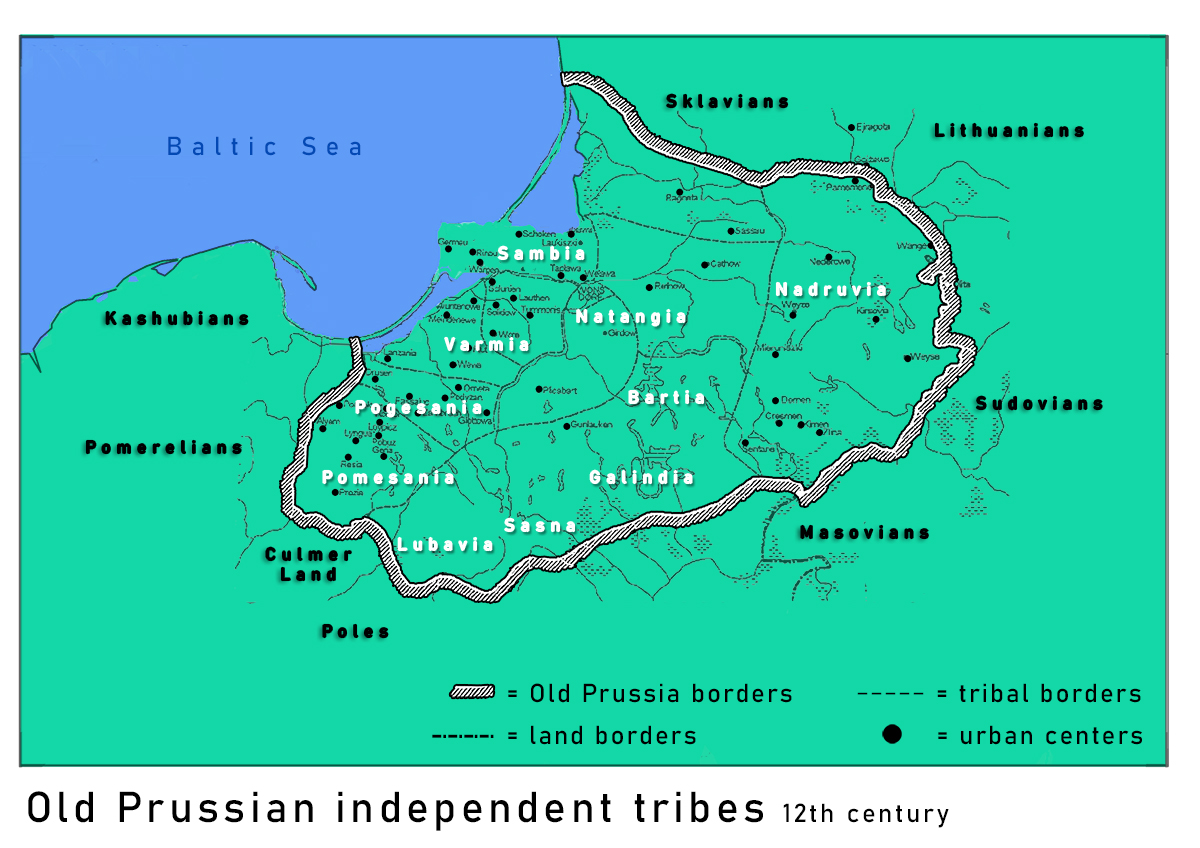|
Kūlgrinda (band)
Kūlgrinda is a folk music group from Vilnius, Lithuania, established in 1989 by Inija and Jonas Trinkūnas. The group is connected to the Lithuanian neopagan movement Romuva and often performs as a part of the movement's ceremonies. History The band was founded in 1989 by Jonas Trinkūnas and his wife Inija Trinkūnienė who also were the leaders of the modern Pagan movement Romuva. The band has from the start functioned as the musical expression of this movement. Some of the recorded material has functioned as "musical scriptures" for the Romuva members and the band has regularly participated as an integral part of the movement's events.Michael F. Strmiska. 2012. "Paganism-Inspired Folk Music, Folk Music-Inspired Paganism and New Cultural Fusions in Lithuania and Latvia". Handbook of New Religions and Cultural Production. . pp. 361-364 On the website of Romuva, Kūlgrinda is described as a "ritual folklore group". [...More Info...] [...Related Items...] OR: [Wikipedia] [Google] [Baidu] |
Apuolė
Apuolė is a historic village in Skuodas district municipality, Lithuania. It is situated some east of Skuodas by the . It had a population of 132 according to the 2001 census and 119 according to the 2011 census. The Apuolė hillfort is located by the village. Having survived a viking attack in 854, Apuolė is the oldest Lithuanian settlement mentioned in written sources. Since 2004, the attack is commemorated by an annual medieval reenactment Apuolė 854. History Apuolė was an important hill fort of the Curonians, one of the Baltic tribes. The hill fort is situated at the confluence of the and its tributary, . Archaeologists dated the wooden fortress to the 1st century AD. According to archaeological research, a large village was situated near the hill fort. This would indicate early stages of city development. Apuolė was mentioned by Rimbert in his ''Vita Ansgari'' in the context early conflicts between the Curonians and vikings in 854. Apuolė was mentioned again onl ... [...More Info...] [...Related Items...] OR: [Wikipedia] [Google] [Baidu] |
Sutartinės
Lithuanian folk songs (in Lithuanian: ) are often noted for not only their mythological content but also their relating historical events. Lithuanian folk music includes romantic songs, wedding songs, as well as work songs and archaic war songs. Traditional songs are performed either solo or in groups, in unison or harmonized in primarily in thirds (''tūravoti'' - lith. "to harmonize"). There are three ancient styles of singing in Lithuania that are connected with ethnographical regions: monophony, multi-voiced homophony, heterophony and polyphony. Monophony mostly occurs in southern (Dzūkija), southwest (Suvalkija) and eastern (Aukštaitija) parts of Lithuania. Multi-voiced homophony is widespread in the entire Lithuania. It is most archaic in the western part (Samogitia). Polyphonic songs are common in the renowned sutartinės tradition of Aukštaitija and occurs only sporadically in other regions. Many Lithuanian dainos are performed in the minor key. Parts of Igor Str ... [...More Info...] [...Related Items...] OR: [Wikipedia] [Google] [Baidu] |
Neopagan Music
Modern pagan music or neopagan music is music created for or influenced by modern Paganism. Music produced in the interwar period include efforts from the Latvian Dievturība movement and the Norwegian composer Geirr Tveitt. The counterculture of the 1960s established British folk revival and world music as influences for American neopagan music. Second-wave feminism created women's music which includes influences from feminist versions of neopaganism. The United States also produced Moondog, a Norse neopagan street musician and composer. The postwar neopagan organisations Ásatrúarfélagið in Iceland and Romuva in Lithuania have been led by musicians. Several subgenres of rock music have been combined with neopaganism. Neofolk bands have featured pagan revivalists since the genre's inception, pagan rock emerged in the 1980s as a distinct genre or subgenre of gothic rock, and several heavy metal bands have associated themselves with paganism since the early 1990s. Festival ... [...More Info...] [...Related Items...] OR: [Wikipedia] [Google] [Baidu] |
Austėja
The list of Lithuanian gods is based on scarce written sources and late folklore. Many of them were outright invented. Lithuania converted to Christianity in 1387, but elements of Lithuanian mythology survived into the 19th century. The earliest written sources, authored by foreigners and Christians, only briefly mention the Lithuanian gods. Beginning in the 16th century, the pagan religion received more attention from authors, but often their accounts were confused, contradictory, and heavily influenced by various religious agendas. Collection and recording of folklore began in the 19th century, by which time the pagan mythology had become fragmented and mixed with Christian traditions. The cults of old deities transformed into folklore (individual tales, myths, songs, etc.) without associated rituals. Because of such difficulties obtaining data, there is no accepted list of Lithuanian gods. Different authors present wildly contradictory reconstructions of the Lithuanian pantheo ... [...More Info...] [...Related Items...] OR: [Wikipedia] [Google] [Baidu] |
Laima
Laima is a Baltic goddess of fate. She was associated with childbirth, marriage, and death; she was also the patron of pregnancy, pregnant women. Laima and her functions are similar to the Hindu goddess Lakshmi. In Latvia In Latvian mythology, Laima and her sisters, Kārta and Dēkla, were a trinity of fate deities, similar to the Norse Norns or the Greek Moirai. Laima makes the final decision on individual's fate and is considerably more popular. While all three of them had similar functions, Laima is the Goddess of luck and is more related with mothers and childbirth, Dēkla is in charge of children, and Kārta holds power over the adult's life. In modern Dievturi these three goddesses are referred to as the three Laimas, indicating they are the same deity in three different aspects. Birth rituals at the end of the 19th century included offerings of hen, sheep, towels or other woven materials to Laima. Only women could participate in the ritual, performed in a sauna (''pirtis' ... [...More Info...] [...Related Items...] OR: [Wikipedia] [Google] [Baidu] |
Žemyna
Žemyna (also Žemynėlė or Žemelė) (from – ''earth'') is the goddess of the earth in Lithuanian religion. She is usually regarded as mother goddess and one of the chief Lithuanian gods similar to Latvian Zemes māte. Žemyna personifies the fertile earth and nourishes all life on earth, human, plant, and animal. All that is born of earth will return to earth, thus her cult is also related to death. As the cult diminished after baptism of Lithuania, Žemyna's image and functions became influenced by the cult of Virgin Mary. Name Žemyna stems from the name of Proto-Indo-European Earth-goddess ''* Dʰéǵʰōm''. It relates to Thracian ''Zemele'' ('mother earth') and Greek '' Semelē'' (). Role Žemyna was first mentioned by Jan Łasicki (1582). It was later also described by Mikalojus Daukša (1595), Daniel Klein (1653), Matthäus Prätorius, Jacob Brodowski (1740), and in numerous folk legends, beliefs, and prayers. Prätorius described a ritual, called ''žemyn ... [...More Info...] [...Related Items...] OR: [Wikipedia] [Google] [Baidu] |
Gediminas
Gediminas ( – December 1341) was Grand Duke of Lithuania from 1315 or 1316 until his death in 1341. He is considered the founder of Lithuania's capital Vilnius (see: Iron Wolf legend). During his reign, he brought under his rule lands from the Baltic Sea to the Black Sea. The Gediminids dynasty he founded and which is named after him came to rule over Poland, Hungary and Bohemia. Biography Origin Gediminas was born in about 1275. Because written sources of the era are scarce, Gediminas' ancestry, early life, and assumption of the title of Grand Duke in ca. 1316 are obscure and continue to be the subject of scholarly debate. Various theories have claimed that Gediminas was either his predecessor Grand Duke Vytenis' son, his brother, his cousin, or his hostler. For several centuries only two versions of his origins circulated. Chronicles — written long after Gediminas' death by the Teutonic Knights, a long-standing enemy of Lithuania — claimed that Gediminas was a host ... [...More Info...] [...Related Items...] OR: [Wikipedia] [Google] [Baidu] |
Old Prussian Language
Old Prussian is an extinct West Baltic language belonging to the Baltic branch of the Indo-European languages, which was once spoken by the Old Prussians, the Baltic peoples of the Prussian region. The language is called Old Prussian to avoid confusion with the German dialects of Low Prussian and High Prussian and with the adjective ''Prussian'' as it relates to the later German state. Old Prussian began to be written down in the Latin alphabet in about the 13th century, and a small amount of literature in the language survives. In modern times, there has been a revival movement of Old Prussian, and there are families which use Old Prussian as their first language. Classification Old Prussian is an Indo-European language belonging to the Baltic branch. It is considered to be a Western Baltic language. Old Prussian was closely related to the other extinct West Baltic languages, namely Sudovian, West Galindian and possibly Skalvian and Old Curonian. Other linguists co ... [...More Info...] [...Related Items...] OR: [Wikipedia] [Google] [Baidu] |
Old Prussians
Old Prussians, Baltic Prussians or simply Prussians were a Balts, Baltic people that inhabited the Prussia (region), region of Prussia, on the southeastern shore of the Baltic Sea between the Vistula Lagoon to the west and the Curonian Lagoon to the east. As Balts, they spoke an Indo-European languages, Indo-European language of the Baltic languages, Baltic branch now known as Old Prussian language, Old Prussian and worshipped pre-Christian Prussian mythology, deities. Their ethnonym was later adopted by predominantly Low German language, Low German-speaking inhabitants of the region. The duchy of the Duchy of Poland (c. 960–1025), Polans under Mieszko I, which was the predecessor of the Kingdom of Poland (1025–1385), Kingdom of Poland, first attempted to conquer and baptize the Baltic tribes during the 10th century, but repeatedly encountered strong resistance. Not until the 13th century were the Old Prussians subjugated and their lands conquered by the State of the Teuton ... [...More Info...] [...Related Items...] OR: [Wikipedia] [Google] [Baidu] |
Perkūnas
Perkūnas (, , Old Prussian: ''Perkūns'', ''Perkunos'', Sudovian language, Yotvingian: ''Parkuns'', Latgalian language, Latgalian: ''Pārkiuņs'') was the common Baltic languages, Baltic List of thunder gods, god of thunder, and the second most important deity in the Baltic Pantheon (gods), pantheon after Dievas. In both Lithuanian mythology, Lithuanian and Latvian mythology, he is documented as the god of sky, thunder, lightning, storms, rain, fire, war, law, order, fertility, mountains, and oak trees. Etymology The name continues PIE ''*'', cognate to ''*'', a word for "oak", "fir" or "wooded mountain". The Proto-Baltic language, Proto-Baltic name *''Perkūnas'' can be reconstructed with certainty. Slavic Perun is a related god, but not an etymologically precise match. Finnish people, Finnish Perkele, a name of Ukko, is considered a loan from Baltic. Another connection is that of ''terpikeraunos'', an epithet of Zeus meaning "''who enjoys lightning''". Perkūnas in wri ... [...More Info...] [...Related Items...] OR: [Wikipedia] [Google] [Baidu] |
Lithuanian Folklore Performance
Lithuanian may refer to: * Something of, from, or related to Lithuania, a country in the Baltic region in northern Europe ** Lithuanian language ** Lithuanians, a Balts, Baltic ethnic group, native to Lithuania and the immediate geographical region ** Lithuanian cuisine ** Culture of Lithuania, Lithuanian culture Other uses * Lithuanian Jews as often called "Lithuanians" (''Lita'im'' or ''Litvaks'') by other Jews, sometimes used to mean Mitnagdim * Grand Duchy of Lithuania * Polish–Lithuanian Commonwealth See also * List of Lithuanians {{disambig Language and nationality disambiguation pages ... [...More Info...] [...Related Items...] OR: [Wikipedia] [Google] [Baidu] |
Folk Rock
Folk rock is a fusion genre of rock music with heavy influences from pop, English and American folk music. It arose in the United States, Canada, and the United Kingdom in the mid-1960s. In the U.S., folk rock emerged from the folk music revival. Performers such as Bob Dylan and the Byrds—several of whose members had earlier played in folk ensembles—attempted to blend the sounds of rock with their pre-existing folk repertoire, adopting the use of electric instrumentation and drums in a way previously discouraged in the U.S. folk community. The term "folk rock" was initially used in the U.S. music press in June 1965 to describe the Byrds' music. The commercial success of the Byrds' cover version of Dylan's " Mr. Tambourine Man" and their debut album of the same name, along with Dylan's own recordings with rock instrumentation—on the albums '' Bringing It All Back Home'' (1965), '' Highway 61 Revisited'' (1965), and '' Blonde on Blonde'' (1966)—encouraged other folk ... [...More Info...] [...Related Items...] OR: [Wikipedia] [Google] [Baidu] |





